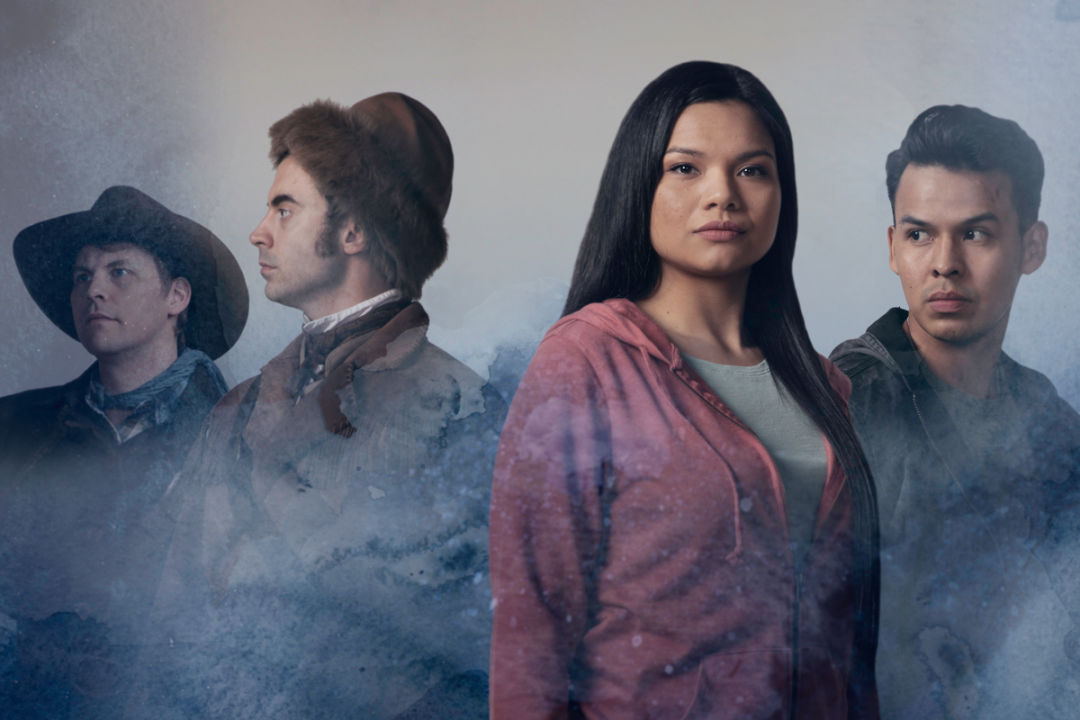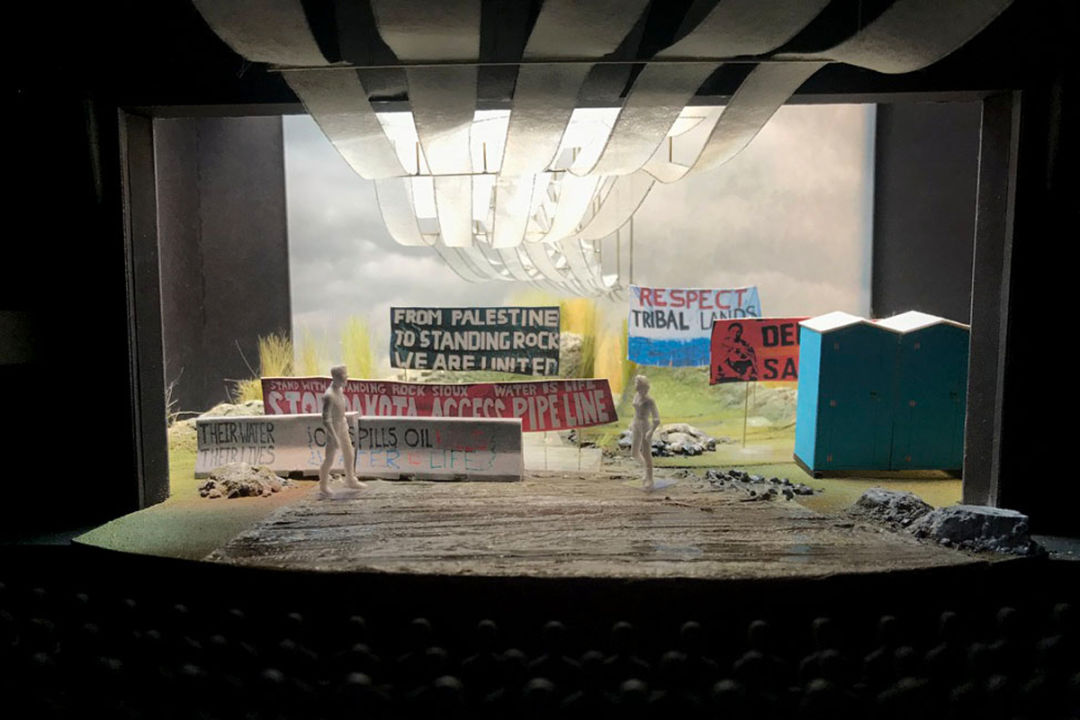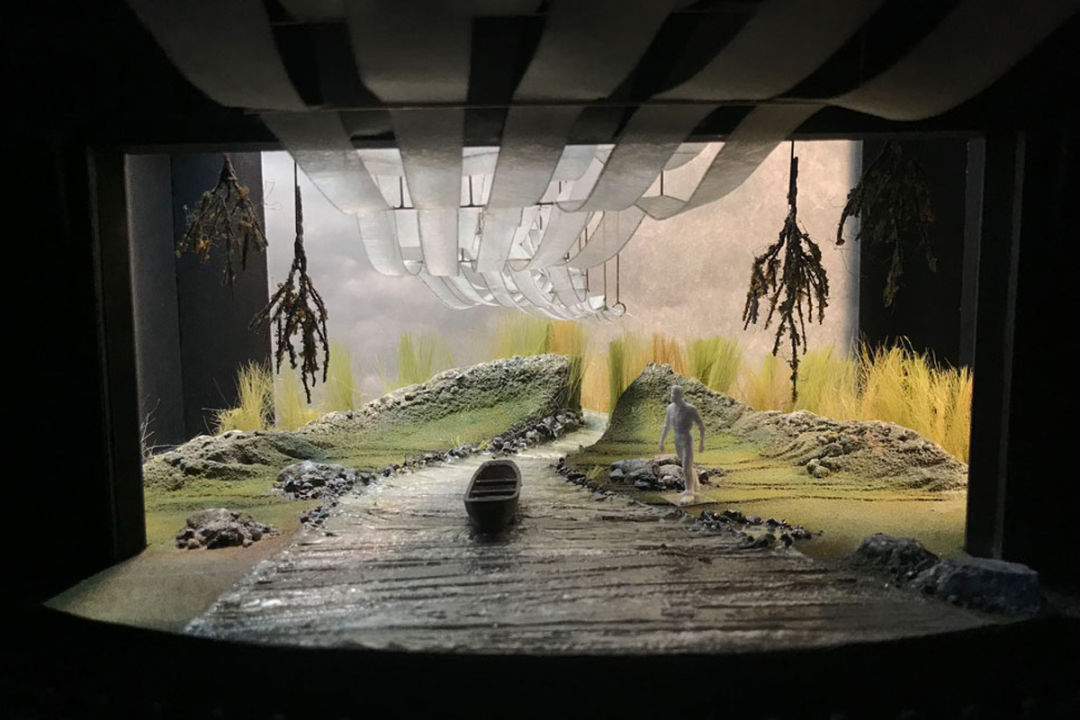Sacajawea and Standing Rock: This Riveting New Play Ties the Past to the Present

Members of the cast of Crossing Mnisose (left to right): Chris Murray, Nick Ferrucci, Nathalie Standingcloud, and Robert I. Mesa.
Image: Kate Szrom
Crossing Mnisose is a bracing, expansive play written by celebrated playwright, activist, and attorney Mary Kathryn Nagle, a citizen of Cherokee Nation. Molly Smith, the director of this world premiere production, talks about how the play weaves our past with our present.

Crossing Mnisose director Molly Smith (right) with playwright Mary Kathryn Nagle at The Armory.
Image: Kate Szrom
Give a quick introduction to Crossing Mnisose and its juxtaposition of two time periods.
Our gifted playwright Mary Kathryn Nagle takes us back to 1805 and the story of Sacajawea and Lewis and Clark. Then she time trips us to 2016, to the fight for the river at Standing Rock. Each actor plays a character in the past and present, and although different people, clearly there is a resonance between each pairing.

The set model for Crossing Mnisose displaying a scene that takes place during the protest at Standing Rock. The set is designed by the Tony Award-winning scenic designer Todd Rosenthal.
Why is it important to revisit Sacajawea’s story now, and what does this play bring to our cultural understanding of that part of our shared history?
Those who write history tell the stories we carry from childhood. The American “history” of the Native American people has almost always been written by others. Until now. We’ve heard the Sacajawea story through the diaries of Meriwether Lewis and some heroic statues. Thankfully, we have thrilling writers like Mary Kathryn Nagle telling her story from a Native American point of view, and we are rocked by her perspective. There is nothing timid about this play, and it reminds us over and over again that characters, ideas, and situations repeat themselves through time.

The set model depicting the Mnisose, which flows through the center of the stage.
In both time periods, the play is set along the banks of the Mnisose. Talk about why this location is important to the story.
The Mnisose — or the Missouri River as it’s called by many today — is the fourth largest river in the world. People have depended on Mnisose and its tributaries as a source of sustenance and transportation for generations. More than ten major groups of Native Americans once populated the watershed, many leading a nomadic lifestyle and were dependent on enormous bison herds that roamed the Great Plains. The Mnisose lives at the heart of our story. The fight for the natural resources of this mighty river spans lifetimes.
In Crossing Mnisose, the fight for the Missouri River (Mnisose) is past and present. In both 1805 and 2016, the fight is visceral; the present story is informed by the bloodlines of the past. From Mary Kathryn’s perspective, we are all water protectors — our individual and collective lives depend on it. Native Americans continually show us the way to fight for Mother Earth. May we all hear her play as a call to action to protect the land and waterways of America.
Originally born in the Pacific Northwest, Molly Smith now lives in Washington, D.C., where she heads the venerable theater Arena Stage.
Don’t miss Crossing Mnisose running at The Armory from April 13 — May 5. More information can be found at www.pcs.org/crossing.
